
Wealth of resources on:
Healthy Spaces
Promoting Belonging
Building Resilience
Mental Health Literacy
Promising Practices
- Subject:
- Education
- Material Type:
- Activity/Lab
- Date Added:
- 01/06/2021
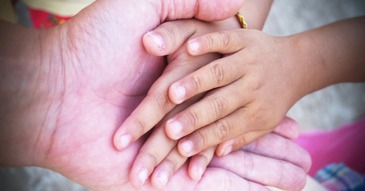
Inside this collection (which is pillar 2 of PeBL in Sun West): Character looks at those soft skills that are not taught inside a curriculum always. Inside you will find lessons and activities around Character Day, Self-Regulation, Grit or Growth Mindset. This relates to 21st century skills/7 Cs/SECRET skills as well.

Wealth of resources on:
Healthy Spaces
Promoting Belonging
Building Resilience
Mental Health Literacy
Promising Practices
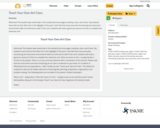
Welcome!! The student take ownership in this activity that encourages creativity, voice, and choice. My students have told me that often this is the highlight of the year! I also feel that many executive functioning and classroom environment skills are enforced as well in this Unit. Students will need a generous amount of time to complete this extensive unit.
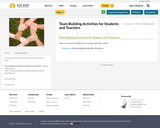
hese are six great activities that can be done with kids or adults.
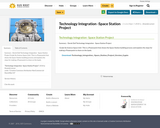
Summary - Derek Doll Technology Integration - Space Station Project
Grade Six Science Space Unit- This is a Powerpoint that shows the Space Station building process and explains the steps for making a Powerpoint to share on the Ipads.

Do you want to foster a good classroom atmosphere and have the students learn about each other in a fun way?
Get students to fill in the template about themselves and and then guess the facts about the others in the class. They identify their favorite color, food, animal and subject. Background audio, animation and more fun stuff can be added.
Create a free Genially account (sign in through your Google account) to access this great resource.
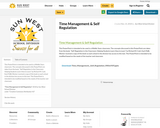
This PowerPoint is intended to be used in a Middle Years classroom. The concepts discussed in this PowerPoint are taken from the book, "Self-Regulation in the Classroom: Helping Students Learn How to Learn" by Richard M. Cash. Each PeBL Mentor received a copy of this book so each school in the division has access to this text. This PowerPoint is intended to be modified based on the needs of the teacher and classroom
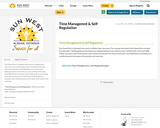
This PowerPoint is intended to be used in a Middle Years classroom. The concepts discussed in this PowerPoint are taken from the book, "Self-Regulation in the Classroom: Helping Students Learn How to Learn" by Richard M. Cash. Each PeBL Mentor received a copy of this book so each school in the division has access to this text. This PowerPoint is intended to be modified based on the needs of the teacher and classroom
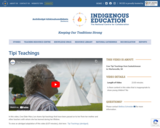
In this video, Cree Elder Mary Lee shares tipi teachings that have been passed on to her from her mother and other teachers with whom she has learned during her lifetime.

"Download our Toolkit for Promoting Empathy in Schools. You can download the toolkit in Spanish, French, and Korean, too.
The Start Empathy Toolkit is the product of interviews with more than 60 educators and leading social entrepreneurs. We asked quite simply, “What works?” We wanted to know what it would take to create a classroom where kids’ social and emotional needs are met and how to cultivate the kinds of skills that are critical for success in today’s (and tomorrow’s) world. The result is not a prescription or a formula, or a silver-bullet fix. Consider this a living set of tools: tools that will grow and evolve over time, as each of us adds our own. We encourage you to think beyond your classroom walls to what it takes to mobilize your entire school community. Together, let’s creatively reimagine what changemaking education can look like.
The toolkit contains the combined wisdom of dozens of teachers, organizations, and people who live this everyday: tips and tools, lesson plans and examples, and, most importantly, insights that can help inform everything from how you design your classroom to your daily interactions with students and colleagues. Some exercises can be done in as little as two minutes, while others can take the form of months-long class projects, applied to a range of subjects. Others simply offer a strategy you can adapt to your existing lesson plans, and tips that are proven to improve teacher and student performance alike. Some you may be familiar with, and others may be new. We invite you to test these in your classroom, and use them to generate ideas of your own."

For every 10 activities that your class participates in, a high-density nutrition pack is sent out to a child in need. Such rich connections to Social Studies, Mental Wellness, and Physical Activity! And the teacher account is free and compatible with Clever as well.
How It Works:
1. Sign Up & Play Videos
Teachers, groups/clubs and parents sign up. Then, all kids have to do is watch (and interact with) our Kid Power Up videos in class or at home.
2. Unlock Global Impact
For every 10 videos you play, you unlock 1 Ready-to-use Therapeutic Food (RUTF) packet. We deliver this life-saving, vitamin-rich food to severely malnourished children around the world.
3. Earn Local Impact
YOU decide which local causes your coins benefit!
As you play videos, you also earn virtual coins to allocate in our Kid Power Exchange®. Choose to support food banks or deliver PPE masks (both essential to COVID-19 relief), or plant trees for your local community!

Despite obstacles in his life such as a family illness and the Great Depression, Uncle Jed achieved his dream of opening a barbershop at age 79.
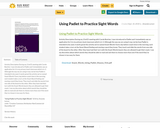
Activity Description During my 21stCE meeting with Carole Butcher, I was introduced to Padlet and I immediately saw an application for it in my primary level classroom which is k-3. Although the way we are using it may not be how Padlet is intended to be used, it works great the activity we’ve named Snack Words! Every day before snack time in the morning, each student takes a turn at the Smart Board finding and moving a word they know. They touch and slide the words from one side of the board to the other. After they have had their turn with the Snack Words board, they are allowed to get their snack. I use my discretion about which words they should be able to read and ask them to choose more than one if the word they’ve chosen is too easy for them.
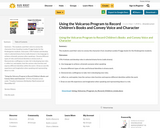
Summary :
The students used their voice to convey the characters from Jonathan London Froggy books for the Kindergarten students.
Outcomes:
CP6.4 Initiate and develop roles in selected drama forms (radio drama).
b. Use language to achieve a dramatic purpose when speaking
c. Assume different types of roles and fictional identities in drama work.
d. Demonstrate a willingness to take risk in developing new roles.
e. reflect on, and explain, how the various roles function and express different identities within the work.
f. Draw on own life experience and imagination when speaking and representing ideas in a role.

This website allows you to take a free survey to learn about your signature character strengths.
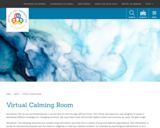
Sometimes life can be overwhelming and it can be hard to work through difficult times. This Virtual Calming Room was designed to assist in identifying different strategies for managing emotions.
Resource Links:
-Sounds and Music
-Visual Relaxation
-Guided Practice
-Colouring & Create
-Live Cameras
-Smart Phone Apps
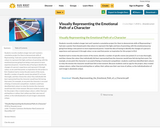
Students recently studied a longer text and I wanted a cumulative project for them to demonstrate skills of Representing. I had seen a poster that showed paint chip colours to represent the highs and lows of parenting, with the emotional journey going from being a new parent to more experienced parent. I loved the idea of having to identify the changes of a person’s experience and represent it through colour, so we used that poster as inspiration for this project in ELA.
Students had to review the plot events of the movie, identify x number of specific events (we picked 21 so it was thorough), and then choose the colour they individually felt best represented how the character would have felt during that event. For example, at one point the character is accused of being a Communist sympathizer; students could have identified dark colours to relay the tension the character would have felt in that moment. Because students used an app for the project, they created unique colours, rather than just picking blue or yellow; their yellow was their own tone of yellow, so the individualization of each image is absolutely unique.

"Recent studies show self-regulation has been identified as a key factor in a child’s long-term physical, psychological, behavioural, and educational well-being.
Presenters Sara Richardson and Natasha Marston explored the importance of relationships and adult expectations and how better self-regulation skills in early childhood lead to better social skills and better mental health throughout life."

The Wellness Resource Hub is a collection of existing and new resources to address and support Indigenous children and youth's mental and emotional wellness.
The Wellness Resource Hub aims to be a starting point that facilitates knowledge exchange and sharing across communities and Nations.
Most wellness resources are editable, and we encourage communities to adapt them to fit their children and needs.

Have you been trying to get something done all day? Can't seem to manage to?
This little tool helps you understand the exact reason behind your procrastination, and helps you fix it right away.
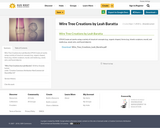
Wire Tree Creations by Leah Baratta
CP4.8 Create art works using a variety of visual art concepts (e.g., organic shapes), forms (e.g., kinetic sculpture, mural), and media (e.g., wood, wire, and found objects).